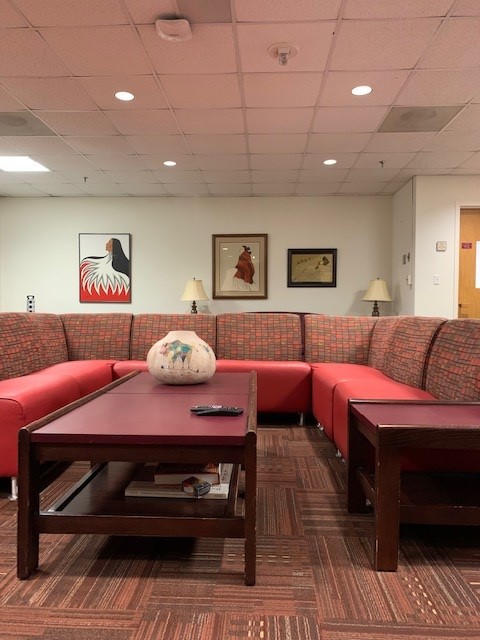Ati: Wa:oki Indigenous Community Center

Land Acknowledgement
Virginia Tech acknowledges that we live and work on the Tutelo/Monacan Peoples’ homeland and we recognize their continued relationships with their lands and waterways. We further acknowledge that legislation and practices like the Morrill Act (1862) enabled the Commonwealth of Virginia to finance and found Virginia Tech through the forced removal of Native Nations from their lands, both locally and in western states and territories. We understand that honoring Native Peoples without explicit material commitments falls short of our institutional responsibilities. Through sustained, transparent, and meaningful engagement with the Tutelo/Monacan Peoples, and other Native Nations, we commit to changing the trajectory of Virginia Tech's history by increasing Indigenous students, staff, and faculty recruitment and retention, diversifying course offerings, supporting Native American student organizations and events; and recognizing the growing needs of all Virginia tribes and supporting their sovereignt
Labor Recognition
Virginia Tech acknowledges that its Blacksburg campus sits partly on land that was previously the site of the Smithfield and Solitude Plantations, owned by members of the Preston family. Between the 1770s and the 1860s, the Prestons and other local white families that owned parcels of what became Virginia Tech also enslaved hundreds of people. We acknowledge that enslaved Black people generated wealth that financed the predecessor institution to Virginia Tech, the Preston and Olin Institute, and they also worked on construction of its building. We further acknowledge that Black people in the local community played crucial roles in providing services and support to Virginia Tech students, faculty, and staff from its founding. Not until 1953, however, was the first Black student permitted to enroll. Through InclusiveVT, the institutional and individual commitment to Ut Prosim (That I May Serve) in the spirit of community, diversity, and excellence, we commit to advancing a more diverse, equitable, and inclusive community.
Overview
Ati: Wa:oki Indigenous Community Center, commonly known as the Indigenous Community Center (ICC) serves as a community gathering area and study space. “Ati: Wa:oki” translates to “meeting house” in the Tutelo language. You'll find the ICC in room 122 of the Squires Student Center, just to the left of the Welcome Center on the first floor.
The center comfortably holds 50 people and offers a communal area, study spaces, and TV/projection capabilities. The space hosts an expanding library of over 200 books, CDs, and DVDs, many of which were donated by faculty, staff, and Indigenous communities. The space also includes a variety of Indigenous art, historic artifacts, and ceremonial pieces representing the cultures and traditions of several Indigenous tribes. There are also nods to Native people in contemporary and popular culture as well as a piece which highlights the eleven tribes within the Commonwealth of Virginia. If you would like to learn more about the center, the pieces displayed, or how to donate art and resources, please contact the center director.


